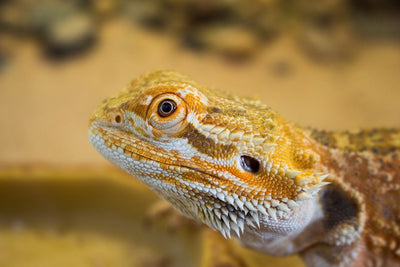- Introduction to Acrylic Reptile Enclosures
- Key Features of Acrylic Reptile Enclosures
- Enhancing Versatility in Habitat Options
- Comparing Acrylic to Other Enclosure Materials
- Maintenance and Longevity of Acrylic Enclosures
- Selecting the Right Acrylic Enclosure for Your Needs
- Conclusion: Why Choose Acrylic Reptile Enclosures
Introduction to Acrylic Reptile Enclosures
If you're a reptile enthusiast, you know how important it is to provide your scaly friends with a safe, comfortable, and visually appealing home. Acrylic reptile enclosures have become a popular choice among hobbyists, and for good reason! These enclosures offer the perfect balance between practicality and aesthetics, making them a favorite for both beginners and pros. Let's dive in and explore what these unique habitats are all about.
So, what exactly are acrylic reptile enclosures? Put simply, they're enclosures made from high-quality acrylic material designed specifically to house reptiles of various species. From geckos and snakes to tarantulas and insects, these enclosures check a lot of boxes for pet owners.
The popularity of acrylic stems from its ability to deliver crystal-clear views of your pets while maintaining durability. Traditional glass tanks are prone to cracking or shattering, but acrylic provides an extremely resilient alternative. Plus, it weighs less than glass, making it easier to work with and move around your space.
Whether you're showcasing your reptiles in a professional breeding setup or just want a chic addition to your living room, acrylic enclosures blend into any environment beautifully. If you don't believe me, just check out items like the Talis-us Acrylic Reptile Breeding Tarantula Enclosure Arboreal Habitat for Spiders Gecko—it’s a stylish and effective choice to get started.
Now that we've set the stage, let's dig deeper into the world of acrylic reptile enclosures, examining their unique features, versatility, and how they compare to other materials. Stay with me—you might just find your next reptile setup!
Oh, and if you need more encouragement, keep in mind that acrylic enclosures are not just built for looks. They protect your reptiles, simplify maintenance, and bring a touch of sophistication to your hobby. Ready? Let's go!
Key Features of Acrylic Reptile Enclosures
What makes acrylic reptile enclosures such a standout choice for reptile lovers? It's all in the details. These tanks come loaded with features that make them incredibly functional and versatile. Trust me, once you get familiar with them, you'll see why they dominate the market.
First up is their transparency. The high clarity of acrylic allows you to easily observe your pets while they go about their day (or night, for nocturnal creatures). Unlike some glass enclosures that can distort your view, acrylic gives you that “window to nature” effect.
Next, think about durability. Acrylic can handle bumps and minor impacts in ways glass simply can’t. Whether you have kids, pets, or just a tendency to accidentally bump into things (no judgment), this sturdiness can be a lifesaver.
Acrylic enclosures also weigh less than their glass counterparts. If you're setting up a large display or rearranging your space frequently, this feature becomes especially handy.
Want personalization? Of course, you do. Acrylic enclosures often come in customizable designs, and you can even find cool options like the Talis-us Acrylic Hexagon Tarantula Enclosure Reptile Terrarium, which brings an artistic twist to housing your pets.
Last but not least: ventilation. Modern acrylic enclosures generally come with precision-cut ventilation holes or panels, ensuring your reptiles get just the right airflow. So whether it's a tarantula or a small snake, they'll be comfy and healthy.
Enhancing Versatility in Habitat Options
One of the best things about acrylic reptile enclosures is how versatile they are. These enclosures can be adapted to suit virtually any reptile species, making them a go-to option for exotic pet owners.
Imagine you have a tarantula—these eight-legged wonders thrive in habitats that offer plenty of climbing opportunities as well as secure, enclosed areas. With acrylic setups, such as the Talis-us Acrylic Tarantula Enclosure Transparent Terrariums Horizontal or Vertical Style, your spider has all the space and customization they could need.
Need a horizontal setup for a ground-dwelling lizard? Or perhaps a vertical display for an arboreal species? No problem—acrylic enclosures can be configured in both styles. Adaptability is key here, and acrylic tanks don't disappoint.
Decoration enthusiasts, rejoice! You can easily deck out an acrylic enclosure with artificial plants, rocks, and other decor to mimic a natural environment. Don’t forget the substrate; acrylic works beautifully with everything from sand to bark chips.
The versatility doesn't stop at aesthetic touches; acrylic habitats also accommodate temperature regulation tools beautifully. Set up your heating pads, UV lamps, and humidity controllers without worrying about cracking or warping the material.
This adaptability ensures every species—from the humble leopard gecko to the majestic ball python—gets a habitat tailored to their needs. You'll no longer have to compromise between form and function; acrylic gives you the best of both worlds.
Comparing Acrylic to Other Enclosure Materials
When it comes to reptile enclosures, there are plenty of materials to choose from. So how does acrylic stack up against the competition? Let’s break it down into some key categories: clarity, durability, weight, and cost.
1. Clarity
Compared to glass and plastic, acrylic reigns supreme in optical clarity. Glass can sometimes create glare, while plastic often scratches easily, ruining the view. Acrylic's pristine finish almost makes it feel invisible!
2. Durability
While glass will shatter under direct impact, acrylic is shatter-resistant. Wooden enclosures might seem sturdy at first, but they eventually warp or degrade with moisture. Acrylic holds up remarkably well under daily use.
3. Weight
If you’ve ever hauled a traditional glass terrarium, you know it’s no joke. Acrylic offers that same robust build but weighs significantly less, making life a little easier.
4. Cost
Here’s where some might hesitate. Acrylic enclosures do tend to cost more upfront than basic glass or plastic ones. The good news? You’re investing in quality, longevity, and fewer replacements over time.
In short, while each material has its pros and cons, acrylic leans heavily towards being the smartest choice for reptile enthusiasts who want performance, style, and reliability.
Maintenance and Longevity of Acrylic Enclosures
Let’s be real: no enclosure is completely maintenance-free, but acrylic ones come pretty close! Thanks to their user-friendly design, keeping these tanks clean and in tip-top shape is a breeze.
Dust and other buildup can easily be wiped away with a soft, damp cloth. Just avoid abrasive materials that could scratch the surface. Invest in cleaning tools made specifically for acrylic, and you'll be golden.
Another reason acrylic enclosures are such a fan favorite is their resistance to long-term wear. They don’t warp or crack the way some glass or wood tanks might, even with regular cleaning and daily handling.
Speaking of longevity, acrylic is UV-stable, meaning it won't yellow or degrade over time. This ensures your investment looks just as good years from now as it does today.
Plus, lightweight materials mean you can easily take down the enclosure for deep cleaning or reorganization without straining yourself. And if you're someone who likes switching up their layout often (guilty!), this benefit really shines.
By keeping up with minor maintenance and using proper products, you'll extend the life of your acrylic habitat considerably—another reason it’s worth the upfront cost.
Selecting the Right Acrylic Enclosure for Your Needs
Choosing the perfect enclosure for your reptile might seem overwhelming, but it doesn’t have to be. When selecting an acrylic reptile enclosure, there are a few key factors to keep in mind to ensure you’re making the best choice.
Size is the first consideration. A small enclosure might work for spiderlings or hatchlings, but as your pets grow, they’ll need more room to roam. Items like the Talis-us Acrylic Reptile Enclosure Terrarium Cage For Lizard Snake Tarantula 9"x 9"x 9" are perfect for compact spaces, while more spacious options cater to larger reptiles.
Next, think about your reptile's natural habitat: are they arboreal or terrestrial? Arboreal species prefer taller enclosures that encourage climbing, while terrestrial species thrive in setups emphasizing ground space.
Ventilation is also crucial. Look for enclosures with proper airflow, as the right balance prevents mold growth and maintains your pet’s health. For example, features like slide-open lids and breathable designs can make a world of difference.
Don’t forget aesthetics—pick something that matches the vibe of your room or display area. Why not go for something stylish yet functional?
Lastly, consider add-ons and ease of use. Is the enclosure compatible with heating and lighting? Does it have secure locking mechanisms? These subtle details often make one option stand out over others.
Conclusion: Why Choose Acrylic Reptile Enclosures
In a nutshell, acrylic reptile enclosures are a game-changer for anyone serious about providing a safe and visually appealing habitat. They combine durability, clarity, and customization in ways other materials just can’t match.
Whether you’re a beginner looking for a compact enclosure or an experienced hobbyist designing an elaborate display, there’s an acrylic option tailor-made for you. Don't forget to check out options like the Talis-us Acrylic Hexagon Tarantula Enclosure Reptile Terrarium to get started.
With proper care and a little creativity, your acrylic enclosure will be a long-lasting, eye-catching part of your reptile collection. So why wait? Upgrade your reptile's home today, and give them the environment they deserve!






